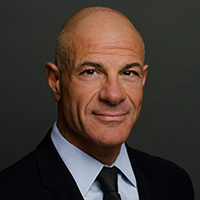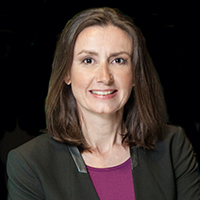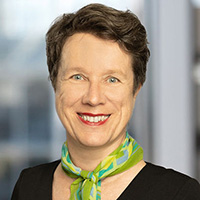By Leszek Demkowicz, Omar Ghattas, Karen Willcox, and Barbara Wohlmuth
John Tinsley Oden, 1936-2023. ©Astrid Eckert/TUM.
John Tinsley Oden—a pioneer in the field of computational science and engineering, and founder of the
Oden Institute for Computational Engineering and Sciences at The University of Texas at Austin—passed away on August 27, 2023, in Austin, Texas. He was 86 years old. Tinsley was born on Christmas Day in 1936 to Sara and John Oden, who instilled him and his younger brother Henry with a sense of honor and humor, an appreciation of education and beauty, an extraordinary work ethic, and community values. He graduated with honors from Bolton High School in Alexandria, La., in 1955, then completed a five-year civil engineering degree at Louisiana State University in only three years and graduated first in his class. In 1959, Tinsley enrolled in a graduate program at Oklahoma State University and earned his M.S. and Ph.D. in engineering mechanics again in three years, finishing at the young age of 25.
After teaching at Oklahoma State University for one year, Tinsley accepted a position as a senior research engineer at the General Dynamics Corporation in Fort Worth, Texas. While there, he met Barbara Smith — his future wife. Once he gained some industrial experience, Tinsley restarted his academic career at the University of Alabama in Huntsville. Huntsville was the center of the nation's space program at the time, and the high intensity of scientific activity provided a fertile field for Tinsley’s professional work over the next nine years. Contemporaneously, he and Barbara were married in 1965 and had two children, Walker and Lee, in 1970 and 1972. Tinsley moved to The University of Texas at Austin in 1973 and remained on the faculty for the next 50 years. He held the school’s Cockrell Family Regents' Chair in Engineering #2 and was a professor in the Department of Mathematics, Department of Computer Science, and Department of Aerospace Engineering and Engineering Mechanics. He also served as UT Austin’s Associate Vice President for Research.
Tinsley is widely known for serving as the first director of UT Austin’s Oden Institute and its previous incarnations. In his 45-year tenure as director, he recruited leading researchers to UT Austin and spearheaded the creation of the Institute’s interdisciplinary graduate program in Computational Science, Engineering, and Mathematics, which currently hosts more than 100 Ph.D. students. During this time, philanthropist Peter O’Donnell was both excited and impressed by Tinsley’s vision. O’Donnell became a major benefactor to the Institute and Oden’s close partner in growing computational science leadership at UT Austin.
Tinsley’s scientific career began with his 1962 Ph.D. dissertation on “Analysis of Plate-beam Structures” [4]. His studies involved elements of spectral approximations, FORTRAN programming, and experimental testing. In the 1960s, Tinsley developed a general theory of finite element methods (FEMs) with applications in electromagnetics, nonlinear thermoelasticity, thermoviscoelasticity, and elastoplasticity; these early analyses formed the basis of his celebrated 1972 treatise: Finite Elements of Nonlinear Continua [5]. In the 1960s and early 1970s, he pioneered applications of FEM to viscous flows and Navier-Stokes equations. Tinsley continued his research on mathematical foundations of nonlinear theories throughout the 1970s and was among the first contributors to the theory and practice of mixed and hybrid FEMs; his work on the convergence and stability of penalty and reduced integration methods found worldwide recognition. In 1983, Tinsley and his collaborators derived the first general formulation for a rolling contact problem that includes finite deformation and friction, which later led to a co-authored monograph titled Bifurcation in Rotating Bodies [6] that significantly impacted mathematical models of contact and friction.
Tinsley began to investigate adaptive FEMs in the early 1980s. His subsequent contributions involved a series of papers on truly hp-adaptive methods with variable element size \(h\) and element order of approximation \(p\). This hp-adaptivity in the context of both FEMs and boundary element methods remained at the center of his scientific interests into the 1990s, with applications in underwater acoustics and compressible viscous and inviscid flows. In the mid-1990s, Tinsley returned to more fundamental theoretical work on numerical methods—including hp discontinuous Galerkin methods and meshless methods—and initiated a new field of adaptive modeling. As these studies continued into the 21st century, he placed new emphasis on goal-oriented adaptivity. During this period, Tinsley’s interests also expanded to encompass stochastic partial differential equations and verification, validation, and uncertainty quantification. In the mid-2000s, he initiated a new line of research on tumor growth and cancer treatment. He concluded his impressive research career with pioneering work on multiscale modeling and prediction of cancer and tumor growth based on Bayesian inversion, which resulted in more than 40 publications. Tinsley’s scientific productivity continued until his very last moments; in fact, one of his final papers was accepted several days before his death. As a great scientific visionary, he was never too old to explore new research directions.
Throughout his life, Tinsley authored or coauthored 29 books and monographs, 29 edited volumes, and nearly 900 articles. He also served as co-editor-in-chief of Computer Methods in Applied Mechanics and Engineering for over 40 years. He was a founder of both the International Association of Computational Mechanics (IACM) and the U.S. Association for Computational Mechanics (USACM) and a member of the National Academy of Engineering and the American Academy of Arts and Sciences. Tinsley held six honoris causa doctorates and was knighted by the French government as "Chevalier des Palmes Academique." He also received multiple prestigious awards, including the A.C. Eringen Medal, Worcester Reed Warner Medal, Melvin R. Lohmann Medal, Theodore von Karman Medal, USACM’s John von Neumann Medal, IACM Congress Medal (Gauss-Newton Medal), Timoshenko Medal, Honda Prize, SIAM Prize for Distinguished Service to the Profession in 2009, and SIAM/ACM Prize in Computational Science and Engineering in 2011. Tinsley was a member of the inaugural 2009 class of SIAM Fellows and made deep and lasting contributions to the SIAM community, particularly through his efforts to define and advance the field of computational science and engineering.
Tinsley played a seminal role in establishing and leading the discipline of computational mechanics. He served as president of IACM, USACM, the American Academy of Mechanics, the Society of Engineering Science, and the Texas Academy of Medicine, Engineering, Science & Technology. He worked tirelessly to articulate the transformative technological and societal impacts of computational mechanics—and of computational science and engineering more broadly—to stakeholders in the federal government, industry, national laboratories, and the general public. Additionally, Tinsley chaired multiple blue ribbon panels that were commissioned by the National Science Foundation (NSF); Department of Energy (DOE); National Academies of Sciences, Engineering, and Medicine, and so forth. These endeavors yielded detailed reports on challenges and opportunities in computational science and engineering, including the 1991 National Academies report on Research Directions in Computational Mechanics [1], the 2006 report of the NSF Blue Ribbon Panel on Simulation-Based Engineering Science [3], and the 2011 report of the NSF Advisory Committee for Cyberinfrastructure Task Force on Grand Challenges [2].
Tinsley was admired for his compelling lectures and astute visions for the future of computational science. He routinely generated excitement about the topic amongst both students and colleagues and was quick to adapt to the changing “scientific market.” By readily addressing and embracing new topics, Tinsley demonstrated an appreciation for universal truths, fundamental science, and mathematical tools. His teaching was uniquely interdisciplinary, embedded in both mathematics and real-life science and engineering applications.
In addition to his wide-ranging fundamental scientific contributions, Tinsley had a profound influence on technology and society through his leadership in the field of computational mechanics. This field has transformed the practice of engineering from its build-and-test roots to the modern era of simulation-based analysis and design in industries such as aerospace, automotive, biomedicine, civil infrastructure, electronics, energy, environmental, mining, manufacturing, materials, and shipbuilding. Over the past half century, computational mechanics has catalyzed a revolution with an immeasurably large impact on society. Today, the design of most products and processes—as well as efforts to understand or predict physical phenomena—have been thoroughly transformed by computer modeling and simulation via the FEM or related methods.
Those who knew Tinsley personally know that he loved to recite a few stanzas of a poem to capture the zeitgeist of an event or conversation. At what ended up being his last research group meeting, in the midst of a debate about a certain “truth model” (i.e., high-fidelity model), he cited the final lines of Ode on a Grecian Urn by one of his favorite poets, John Keats:
When old age shall this generation waste,
Thou shalt remain, in midst of other woe
Than ours, a friend to man, to whom thou say’st,
“Beauty is truth, truth beauty—that is all
Ye know on earth, and all ye need to know.”
These were fitting parting words from a man who left a storied legacy of truth and beauty in the disciplines of computational mechanics and computational science.
References
[1] National Research Council. (1991). Research directions in computational mechanics. Washington, D.C.: The National Academies Press.
[2] National Science Foundation Advisory Committee for Cyberinfrastructure Task Force on Grand Challenges. (2011). Final report, March 2011. Retrieved from https://www.nsf.gov/cise/oac/taskforces/TaskForceReport_GrandChallenges.pdf.
[3] National Science Foundation Blue Ribbon Panel on Simulation-based Engineering Science. (2006). Simulation-based engineering science: Revolutionizing engineering science through simulation. Retrieved from https://www.nsf.gov/pubs/reports/sbes_final_report.pdf.
[4] Oden, J.T. (1962). Analysis of plate-beam structures. [Ph.D. thesis, Oklahoma State University]. Retrieved from https://shareok.org/handle/11244/30631.
[5] Oden, J.T. (1972). Finite elements of nonlinear continua. New York, NY: McGraw-Hill Book Company.
[6] Rabier, P., & Oden, J.T. (1989). Bifurcation in rotating bodies. Paris, France: Masson.
|
Leszek Demkowicz is a full professor in the Department of Aerospace Engineering and Engineering Mechanics as well as the Department of Mathematics at the University of Texas at Austin. He is also an assistant director of the Oden Institute for Computational Engineering and Sciences. Demkowicz holds the W.A. “Tex” Moncrief, Jr. Chair in Computational Engineering and Sciences II at the Oden Institute.
|

|
Omar Ghattas is the Fletcher Stuckey Pratt Chair in Engineering, a professor of mechanical engineering, and director of the OPTIMUS Center in the Oden Institute for Computational Engineering and Sciences at the University of Texas at Austin.
|

|
Karen Willcox is director of the Oden Institute for Computational Engineering and Sciences; W.A. “Tex” Moncrief, Jr. Chair in Simulation-based Engineering and Sciences; Peter O'Donnell, Jr. Centennial Chair in Computing Systems, and a professor of aerospace engineering and engineering mechanics at the University of Texas at Austin. She is also external faculty at the Santa Fe Institute.
|

|
Barbara Wohlmuth is Chair of Numerical Mathematics and director of the International Graduate School of Science and Engineering at the Technical University of Munich. She is a member of the German National Academy of Sciences Leopoldina. Her research interests include mathematical modeling, numerical analysis of partial differential equation systems, high-performance algorithms, and geophysical and biomedical applications.
|